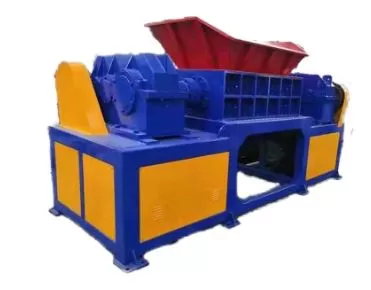Have you ever wondered what happens to discarded metal products, how they’re transformed into reusable materials? I often pondered this question until I delved into the fascinating world of metal shredders. As the CEO of Amige, a company renowned for its top-quality plastic crushers, I’ve gained substantial insight into the shredding process, and I’m thrilled to share my knowledge with you.

Metal shredders are powerful machines designed to reduce metal waste into smaller, manageable pieces. These machines play a crucial role in recycling, ensuring that metal scrap is efficiently processed for reuse. The process involves cutting, tearing, and shredding metal into smaller fragments, which can then be recycled or repurposed.
Understanding how a metal shredder works is not just about acknowledging its mechanical prowess. It’s also about appreciating the intricate technology that goes into transforming scrap metal into a valuable resource. In this blog, I’ll guide you through the working principles of a metal shredder, its components, and why it’s a vital tool in the recycling industry.
What Makes Metal Shredders So Essential in Recycling?
Metal shredders play a pivotal role in recycling. They help in reducing the size of metal scrap, making it easier to handle and process. In an era where sustainability is key, these machines help us ensure that metal waste is not discarded irresponsibly but instead recycled and reused.
What Are the Key Components of a Metal Shredder?
A metal shredder comprises several crucial components, each playing a specific role in the shredding process. The primary parts include the feeding mechanism, shredding blades, motor, and conveyor system. The shredder’s heart is its blades, engineered to withstand the rigors of metal cutting and tearing.
How Does the Shredding Process Work?
The shredding process starts when metal waste is fed into the shredder. This can be done manually or through a conveyor belt. Once inside, the shredding blades, powered by a robust motor, cut through the metal. The material is torn and broken down into smaller pieces, often passing through multiple shredding stages for finer reduction.
What Types of Metals Can Be Shredded?
Metal shredders are versatile and can handle various metals, including steel, aluminum, copper, and brass. The shredder’s design and blade strength determine the type of metal it can process. As technology advances, shredders are becoming more capable of handling a wider range of metal waste.
Are There Different Types of Metal Shredders?
Yes, metal shredders come in different types and sizes, each suited for specific applications. From small, portable units to large, industrial-grade machines, the variety ensures that every recycling need is met. The choice of shredder depends on the volume of metal to be processed and the desired size of the shredded material.
What Happens After the Shredding Process?
After shredding, the metal fragments undergo further processing. This might include separation of ferrous and non-ferrous materials, purification, and compaction. The end product is then ready for recycling, finding its way back into the manufacturing cycle, thus promoting a sustainable and circular economy.
Conclusion
Understanding the workings of a metal shredder offers an insight into the critical role these machines play in recycling and environmental conservation. As we continue to embrace sustainable practices in our industries, shredders stand out as heroes in the background, tirelessly converting waste into valuable resources. At Amige, we’re proud to be part of this journey, contributing to a greener future. Let’s shred away the old, and welcome the new!
